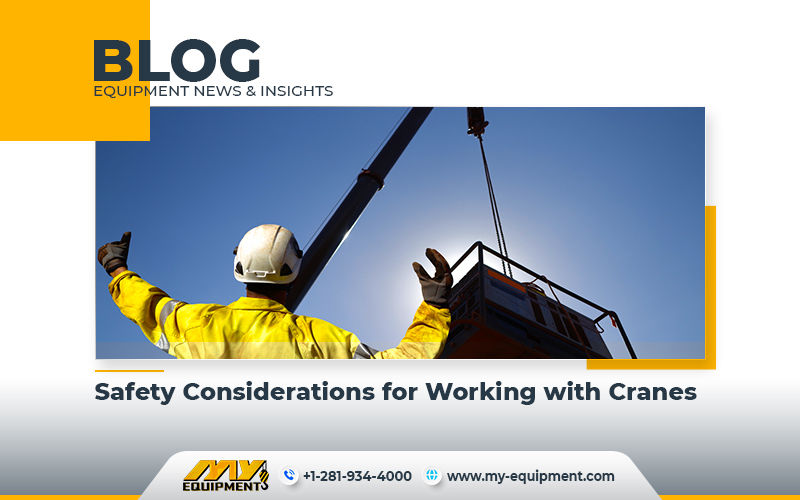Cranes are one of the most versatile pieces of equipment used in construction, transportation, and other heavy-duty industries. They are used for lifting and moving heavy loads, and can be operated both indoors and outdoors. However, working with cranes can be dangerous if proper safety measures are not taken.
Working with cranes can be a dangerous job, but by following proper safety procedures and guidelines, workers can minimize the risk of accidents and injuries. It is important to remember that safety is everyone’s responsibility and that communication and training are critical to ensuring that crane operations are conducted safely and efficiently. The following are a few safety considerations that are necessary for working with cranes.
Operator’s Training
The first step to working with cranes is to ensure that all operators are properly trained and certified. The Occupational Safety and Health Administration (OSHA) requires crane operators to be certified through a recognized program. Additionally, all workers involved in crane operations should receive safety training that includes the proper use of personal protective equipment, as well as safety procedures for working near and around the crane.
The Worksite
When operating a crane, it’s important to carefully evaluate the worksite to identify any potential hazards. This includes looking for overhead power lines, underground utilities, and other obstacles that could interfere with the crane’s movement. All of these potential hazards should be clearly marked and communicated to the crane operator.
Load Rating
Another critical safety consideration when working with cranes is the load rating of the crane. Every crane is designed to carry a specific weight, and exceeding that weight can result in a catastrophic failure. Load ratings are typically posted on the crane, and it’s important to follow these guidelines carefully. If you’re unsure of the load rating for a particular crane, consult the manufacturer’s documentation or a certified crane operator.
Load Security
Before lifting a load, it’s important to make sure that it is properly secured to the crane’s hook. This can be done with straps, chains, or other rigging equipment. The load should be lifted slowly and carefully, and the crane operator should be in constant communication with other workers on the ground to ensure that the load is being lifted safely.
Communication
One of the most important aspects of crane safety is proper communication between the crane operator and other workers on the ground. This includes hand signals, radio communication, or other methods of signalling. All workers should be trained on the proper communication procedures for working with cranes.
Maintenance and Inspection
Finally, it’s important to properly maintain and inspect cranes on a regular basis. This includes checking the crane’s cables, hooks, and other components for signs of wear and tear. Any damaged or worn components should be replaced immediately. Additionally, all crane operators should perform a pre-operation heavy equipment inspection before each use to ensure that the crane is functioning properly.
Takeaway
Working with cranes requires a high level of expertise, training, and safety precautions. By following proper safety procedures and guidelines, workers can minimize the risk of accidents and injuries. Remember to properly evaluate the worksite, carefully secure the load, maintain and inspect the crane regularly, and communicate effectively with other workers on the ground. With these precautions in mind, working with cranes can be a safe and productive experience.


 1400 Broadfield Blvd, Houston, TX 77084,
USA.
1400 Broadfield Blvd, Houston, TX 77084,
USA.